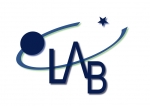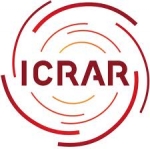Displaying items by tag: radioastronomy
Laboratoire d'Astrophysique de Bordeaux (LAB)
The Laboratory of Astrophysics of Bordeaux (LAB) is a French research centre.
It is a joint research unit of CNRS and the University Bordeaux 1 Science and Technology. It is an integral part of the Aquitanian Observatory for the Sciences of the Universe.
The main missions are :
- international research in the fields of astronomy and astrophysics
- basic and continuing training
- public outreach
The laboratory is composed of researchers and teacher-researchers, engineers, technicians and administrative staff, PhD students and post-docs.
ASTRON
ASTRON is the Netherlands Institute for Radio Astronomy.
ASTRON's programme has three principal elements:
- The operation of front line observing facilities, including especially the Westerbork Synthesis Radio Telescope and LOFAR,
- The pursuit of fundamental astronomical research using ASTRON facilities, together with a broad range of other telescopes around the world and space-borne instruments (e.g. Sptizer, HST etc.)
- A strong technology development programme, encompassing both innovative instrumentation for existing telescopes and the new technologies needed for future facilities.
In addition, ASTRON is active in the international science policy arena and is one of the leaders in the international SKA project. The Square Kilometre Array will be the world’s largest and most sensitive radio telescope with a total collecting area of approximately one square kilometre. The SKA will be built in Southern Africa and in Australia. It is a global enterprise bringing together 11 countries from the 5 continents.
ASTRON is part of the Netherlands Organisation for Scientific Research (NWO).
SKA project
The Square Kilometre Array (SKA project) is a multi-purpose radio telescope that will play a major role in answering key questions in modern astrophysics and cosmology.
It will be one of a small number of cornerstone observatories around the world that will provide astrophysicists and cosmologists with a transformational view of the Universe. It will allow investigating galaxy evolution, cosmology and dark energy.
The Square Kilometre Array will provide a million square metres of collecting area. This huge increase in scale demands a revolutionary break from traditional radio telescope design.
The Square Kilometre Array will be the world's largest and most sensitive radio telescope.
Thousands of linked radio wave receptors will be located in Australia and in Southern Africa. Combining the signals from the antennas in each region will create a telescope with a collecting area equivalent to a dish with an area of about one square kilometre.

The SKA will address fundamental unanswered questions about our Universe including how the first stars and galaxies formed after the Big Bang, how galaxies have evolved since then, the role of magnetism in the cosmos, the nature of gravity, and the search for life beyond Earth.
The Square Kilometre Array is a global science and engineering project led by the SKA Organisation, a not-for-profit company with its headquarters at Jodrell Bank Observatory, near Manchester, UK.
An array of dish receptors will extend into eight African countries from a central core region in the Karoo desert of South Africa. A further array of mid frequency aperture arrays will also be built in the Karoo. A smaller array of dish receptors and an array of low frequency aperture arrays will be located in the Murchison Radio-astronomy Observatory in Western Australia.
- The SKA will be so sensitive that it will be able to detect an airport radar on a planet 50 light years away.
- The SKA central computer will have the processing power of about one hundred million PCs.
ESO, European Southern Observatory
European Southern Observatory, is the foremost intergovernmental astronomy organisation in Europe and the world's most productive astronomical observatory. ESO provides state-of-the-art research facilities to astronomers and is supported by Austria, Belgium, the Czech Republic, Denmark, Finland, France, Germany, Ireland, Italy, the Netherlands, Poland, Portugal, Spain, Sweden, Switzerland and the United Kingdom, along with the host state of Chile. Several other countries have expressed an interest in membership.
ESO, formally the European Organisation for Astronomical Research in the Southern Hemisphere, is usually known as The European Southern Observatory.
ESO's main mission, laid down in the 1962 Convention, is to provide state-of-the-art research facilities to astronomers and astrophysicists, allowing them to conduct front-line science in the best conditions. The annual Member State contributions to ESO are approximately 198 million euros and ESO employs around 700 staff members. By building and operating a suite of the world's most powerful ground-based astronomical telescopes enabling important scientific discoveries, ESO offers numerous possibilities for technology spin-off and transfer, together with high technology contract opportunities and is a dramatic showcase for European industry.
The ESO Headquarters (comprising the scientific, technical and administrative centre of the organisation) are located in Garching near Munich, Germany. In Chile, ESO operates the Vitacura centre as well as three unique observing sites: La Silla, Paranal and Chajnantor.
ESO is building the 39-metre Extremely Large Telescope, the ELT, which will become “the world’s biggest eye on the sky”.
International Centre for Radio Astronomy Research (ICRAR)
The International Centre for Radio Astronomy Research is a collaborative centre based in Perth, Western Australia.
ICRAR has grown steadily since has been created in September 2009.





